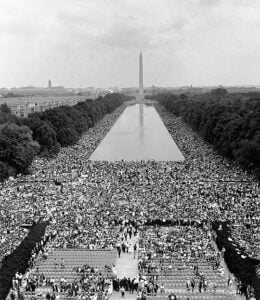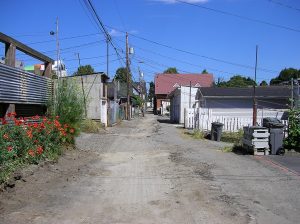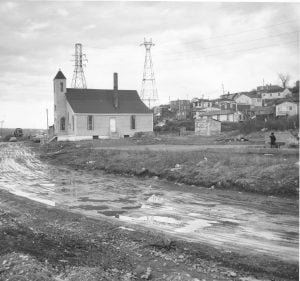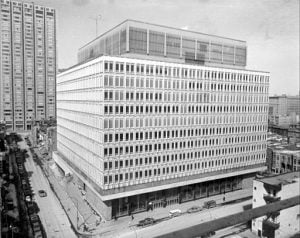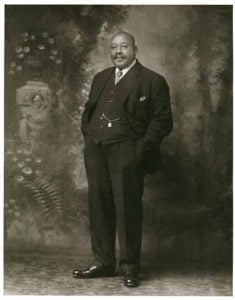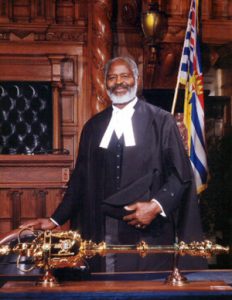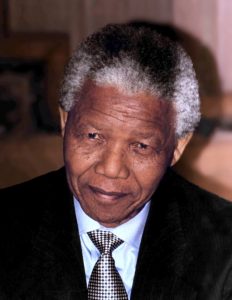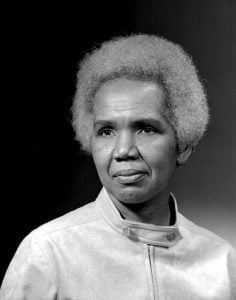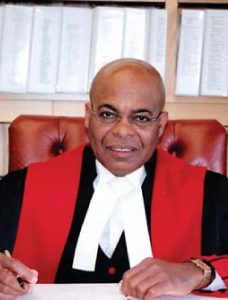BC Black History Timeline
The International Day was adopted by the UN six years after March 21, 1960 – the day police officers in a Black township in South Africa opened fire on a group of people peacefully protesting the oppressive apartheid laws. Sixty‐nine protestors were killed that day.
“Apartheid” is a racist legal system that denied rights and freedoms to anyone who was not considered white. In particular “the pass laws” were used by government to restrict where Black South Africans could work, live and travel.
In South Africa, March 21 is now known as Human Rights Day.
The anniversary of the Sharpeville Massacre, March 21, is remembered around the world as the International Day for the Elimination of Racial Discrimination. Citation: Matthew McRae. “The Sharpeville Massacre.” Canadian Museum for Human Rights. Published March 19, 2019. Updated: August 8, 2023
“I have a dream that my four little children will one day live in a nation where they will not be judged by the color of their skin but by the content of their character.”
An estimated 250,000 people took part in the one-mile March on Washington for Jobs and Freedom from the Washington Monument to the Lincoln Memorial. It was the largest demonstration for human rights in the U.S. and a strong showing of unity. Dr. Martin Luther King Jr., standing in front of the Lincoln Memorial, delivered his historic “I Have a Dream” speech in which he called for an end to racism.
Image: View from the Lincoln Memorial toward the Washington Monument Credit: United States Marine Corps, Public Domain
In 1958 the Vancouver City Council approved a “redevelopment plan” that called for the demolition of nearly all of Strathcona, including Hogan’s Alley. By 1967, more than a dozen blocks, including the western section of Hogan’s Alley, had been leveled for the new viaduct. The centre of Strathcona’s Black neighbourhood and parts of Chinatown were effectively destroyed.
Some years later, the Hogan’s Alley Society (HAS) was formed. It advocates for Black Vancouverites “who have endured the legacies of urban renewal and their erasure from the official historical narrative.”
Image: Mike W. CC BY-SA 2.0 creativecommons.org/licenses/2.0>, via Wikimedia Commons
Africville residents trace their roots back to the late 1700’s. The community was founded chiefly by Black Loyalist Nova Scotians and formerly enslaved African Americans. The majority of residents were landowners in a close-knit community with stores, a school, a post office and the church. During the late 1960s, the City of Halifax condemned and tore down the area.
“The church was demolished on Nov. 20, 1967 in the middle of the night. This was done before the city actually owned the building. The church was bulldozed with many vital records inside. The last home to be demolished would happen on Jan. 2, 1970.”
Source: The Trials and Triumphs of Africville, published March 25, 2020, by Craig Baird https://canadaehx.com/2020/03/25/the-trials-and-triumphs-of-africville/
In spring 1968, six Caribbean students at Sir George Williams University filed a complaint against biology professor Perry Anderson, making a case that he practised racial discrimination in his courses. The University dismissed the complaint. In response, some 200 demonstrators held a peaceful sit-in. Forceful police intervention resulted in extensive property damage. The demonstration and its aftermath received international attention. Although the affair was widely publicised at the time as a “riot,” the demonstration and repercussions are now appreciated in the broader context of racism.
In October 2022, as one of the 88 Task Force recommendations, President Graham Carr delivered an official apology on behalf of Concordia University for its role in the 1969 “riots.”
Image: Sir George William University (today Concordia). The Henry F. Hall building in 1970, (photo by Conrad Poirier [Public domain], via Wikimedia Commons)
Harry Winston Jerome was born on September 30, 1940 in Saskatchewan. His family moved to the Vancouver area in 1951. Rising above the intense racism and discrimination at their school and in their neighbourhood, Harry and his sister Valerie excelled in a variety of sports. Harry’s exceptional speed made him one of the best sprinters to ever represent Canada. The Harry Jerome International Track Classic is held annually in his honour. “His talent, tenacity, and athletic excellence on and off the track inspired a generation of Canadians to ‘never give up’ in their own endeavours.”
Image: The 9-foot bronze statue of Harry Jerome in Stanley Park, Vancouver was unveiled in 1988.
On August 30th, 1972 Emery Barnes was elected as the first member in the double-member riding of Vancouver Centre, along with MLA Gary Lauk. He and Lauk were re-elected in 1975, 1979 and 1983. In 1991, Barnes was elected to the revised single-member riding of Vancouver-Burrard; and at this time he was appointed Deputy Speaker of the Legislature.
In the 1972 election, Rosemary Brown won the riding of Vancouver-Burrard, becoming the first Black woman to sit in the Legislative Assembly of British Columbia. She served as an MLA for 14 years. She also ran for the leadership of the federal NDP in 1975.
John Braithwaite spent 23 years as a councillor for the city of North Vancouver from 1972-1976 and from 1983-2002. He also had almost 40 years of experience as a social worker, especially dealing with troubled youth.
To mark his outstanding community service, the 35,000 square foot John Braithwaite Community Centre opened in October 2004 in Lower Lonsdale, North Vancouver.
On October 12, 1974 Valmond Romilly, a Smithers lawyer, was stopped on the street and arrested by three Vancouver city policemen. The police arrested Romilly because the suspect, like Romilly, was Black. They continued to harass him even after they realized that they had made a mistake. Romilly sued the police for false arrest and was awarded $300 damages plus court costs.
Valmond Romilly went on to become a provincial court judge.
47 years later, on May 14, 2021 retired BC Supreme Court Justice Selwyn Romilly, Valmond’s brother, was stopped and handcuffed by Vancouver Police. Again, relying on racial identity, the police claimed Romilly matched the description of the suspect.
The Victoria Black People’s Society formed during 1975. The group focused on providing cultural and social activities and encouraging their children to learn about their history. They had an estimated 90 households as members. Among their achievements was the production of “A Catalogue of Information and Sources of Information Pertaining to Blacks in British Columbia“.
The preface by Jesse J. Dillard Jr., President, reads, “This catalogue is the result of a summer project of the Victoria Black People’s Society. The aims of the project were to research existing information in public records pertaining to Blacks in British Columbia, catalogue this information, and publish it in a consolidated form.”
The Catalogue is 230 pages; with sources and references for topics such as employment, women, social issues, legal issues, education, and population. In 2017 the catalogue was “digitized” and is now on this website.
Affectionately called “Vie’s” the restaurant was an iconic part of the black community in Hogan’s Alley, and THE favorite place to be served great food for many people working night shifts. It was a meeting place for visiting entertainers and celebrities including Louis Armstrong, Count Bassie, Cab Calloway, Sammy Davis Jr., Ella Fitzgerald, Lena Horne, Lou Rawls, Diana Ross and the Supremes, and Jimi Hendrix (whose grandmother was a cook at Vie’s)
Viva (Vie) was a descendant of the pioneer Alexander family that settled on Salt Spring Island. Her husband, Bob Moore, was from Alabama. Viva died in 1975. Her daughter, Adelene Ellen Alexander Clark, took over Vie’s until it closed in 1979.
Image: Notice posted in the Vancouver Sun about the closure of Vie’s Chicken and Steakhouse at 209 Union Street
Marie Stark Wallace (1867 – 1966) was the third of four daughters of Silvia and Louis Stark. When Marie was in her nineties, she wrote the history of her family. After her death, her manuscript “From Slavery to Freedom: The History of the Stark Family” was published in The Gulf Island Driftwood newspaper as an 11-part series starting on November 7, 1979. The story begins around 1839 when her mother was a young enslaved girl in Missouri.
Image: Sylvia Stark and daughter Marie Stark Wallace during the apple harvest in the 1930s. Courtesy of Salt Spring Island Archives
Thérèse Alexander was called to the BC bar in 1984 and was appointed a BC Provincial Court judge on January 8,1996 — the first Black woman in BC to be appointed. Her great-great-grandparents were Charles and Nancy Alexander. She served on numerous boards and commissions, is a recognized community advocate through her volunteer work and has been honoured by the BC Association of Black Law Students and the Association of Black Lawyers.
Ontario was the first, in 1944, to pass a law protecting equality by banning publication or display of discrimination based on race or belief.
Section 1 of the Canadian Bill of Rights of 1960 recognized and declared that certain human rights existed and shall continue to exist in Canada without discrimination by reason of race, national origin, colour, religion or sex.
Section 15 of the Charter of Rights and Freedoms, which came into effect on April 17,1985, provides that, “Every individual is equal before and under the law and has the right to the equal protection and equal benefit of the law without discrimination and, in particular, without discrimination based on race, national or ethnic origin, colour, religion, sex, age or mental or physical disability.”
The Charter today also protects against discrimination based on sexual identity or orientation.
Joe arrived in Vancouver around 1885-1886 when he was about 20 years old. He worked as a bartender but spent many hours at English Bay, taking it upon himself to be THE informal swimming teacher and lifeguard. In 1910 the City of Vancouver recognized Joe as an official lifeguard to be employed and paid by the City. To celebrate Vancouver’s centennial; Vancouver Historical Society formally declared Joe as “Vancouver Citizen of the Century”.
Joe’s story
Image courtesy of Royal BC Museum and Archives
In 1986 the City of Victoria undertook The Fort Victoria Brick Project to commemorate early Victoria pioneers and settlers. A double row of 1000 bricks was laid from 1000 to 1150 Government Street and in Bastion Square. The bricks for Sir James Douglas and Lady Amelia Douglas are in Bastion Square. Black Pioneers that have engraved bricks are: Charles and Nancy Alexander, James and Mary Louisa (nee Lowe) Barnswell , Howard and Hannah Estes, Mifflin Gibbs, Wellington Delany Moses, Nathan and Sarah Pointer, Louis and Silvia Stark, Ringo’s Restaurant. Charles Jr., Ada and Kenneth Alexander, grandchildren of Charles and Nancy Alexander, are also remembered with engraved bricks.
Their stories can be found on our website and at this digital exhibit, designed and developed by BCBHAS and hosted by Digital Museums Canada “Influencing the Vision of Canada”
Watch this short video about the bricks in Bastion Square
The BC Black History Special Event Advisory Committee was formed to work in partnership with the Royal BC Museum to produce a Black History Special Event for February 1994 “in hopes of leading to a permanent and/or travelling Black History Exhibit”.
There were thirteen committee members and seven committee supporters. They held their first meeting on June 30, 1993. The 1994 event took place Friday, Feb 4 to Sunday, Feb 6. It included an historical exhibit, sports exhibit, fashion show, concert, films, and food. The committee reported that over 5,000 people attended.
Emery Barnes had been in politics since 1972. On August 30, 1972 he was elected as the first member in the double-member riding of Vancouver Centre, along with MLA Gary Lauk and later with MLA Mike Harcourt. In 1991 Barnes was elected to the revised riding of Vancouver-Burrard and appointed Deputy Speaker of the Legislature. He was elected as the Speaker by secret ballot in 1994 and became the first Black person to hold this position in any Canadian province.
Image courtesy of BC Legislature
The success of the Black History Month 1994 event by the Special Event Advisory Committee working with the Royal BC Museum and Archives was the catalyst for community members to form the BC Black History Awareness Society. The Society was incorporated on March 18,1994. Since October 2018, the society has been a registered charity. The first Board members were Clyde Griffith, President, Valin Marshall, Vice-President, Jean Howell, Secretary, Carl Thompson, Treasurer, and Directors-at-large Jonathan Johnson and Tyrone Gaskin.
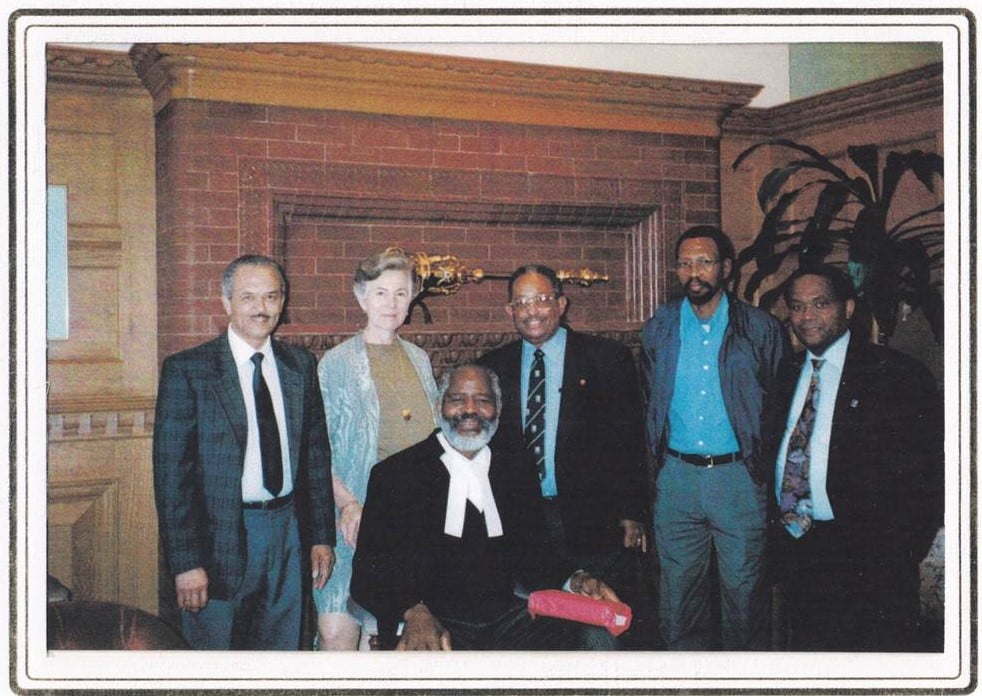
Image: Some of the first board members, committee members, and supporters, November 1994.
(l-r) Valin Marshall, Jean Howell, Emery Barnes (seated) Frank Robinson, Menziwe Mbeo, Clyde Griffith
Nelson Mandela (1918–2013) was a South African black nationalist who spent 27 years in prison for fighting against the country’s discriminatory apartheid system of racial segregation. After his release, Mandela became president of the African National Congress (ANC). In 1993 Mandela and then President de Klerk were awarded the Nobel Peace Prize.
In April 1994, the ANC won South Africa’s first elections. Mandela was sworn in as president of South Africa on May 10, 1994. Since 2009, his birthday on July 18 has been observed annually as Nelson Mandela International Day.
Image: Mandela in Washington, DC 1994: © copyright John Mathew Smith 2001. This file is licensed under the Creative Commons Attribution-Share Alike 2.0 Generic license
Rosemary Brown (1930-2003) was an acclaimed community leader and elected representative. She was distinguished by many awards and recognition before and after being invested into the Order of Canada in 1996.
1972 – National Black Coalition Award
1973 – United Nations, Human Rights Fellowship
1989 – YWCA, Woman of Distinction Award
1991 – University of British Columbia Alma Mater Society, Great Trekker Award
1995 – Government of British Columbia, Order of British Columbia
1996 – Government of Canada, Officer of the Order of Canada
2001 – Government of Jamaica, Commander of the Order of Distinction
2002 – Canadian Labour Congress, Award for Outstanding Service to Humanity
2002 – Harry Jerome Award
2009 – Commemorative Stamp issue
Image: Rosemary Brown 1979, Courtesy of Royal BC Museum and Archives
Justice Selwyn Romilly is recognized as an eminent jurist in the province. Milestones in his celebrated career include:
1966 – Graduated Peter A. Allard School of Law, UBC
1974 – Appointed to the provincial court of B.C.
1991 – Voted by BC lawyers as one of the four best Provincial Court Judges in the province
1995 – Appointed as BC Supreme Court Justice
2008 – Received a distinguished service award from the Black Law Students Association of Canada
Image: © Selwyn Romilly all rights reserved
1926: The precursor to Black History Month was created in 1926 in the United States, when historian Carter G. Woodson and the Association for the Study of Negro Life and History announced the second week of February to be “Negro History Week“. This week was chosen because it coincided with the birthday of Abraham Lincoln on February 12 and of Frederick Douglass on February 14, Black communities had celebrated both dates together since the late 19th century.
1970: Black History Week becomes Black History Month in the U.S.
1976: Black History Month officially recognized by the U.S. government
1987: In the United Kingdom Black History Month is now celebrated in October
1995: In December 1995, the House of Commons in Canada officially recognized February as Black History Month
2008: In February 2008, Senator Donald Oliver, the first Black man appointed to the Senate, introduced the motion to “Recognize Contributions of Black Canadians and February as Black History Month.” It received unanimous approval and was adopted on March 4, 2008.
Image: Joanna Nix-Walkup, Unsplash


